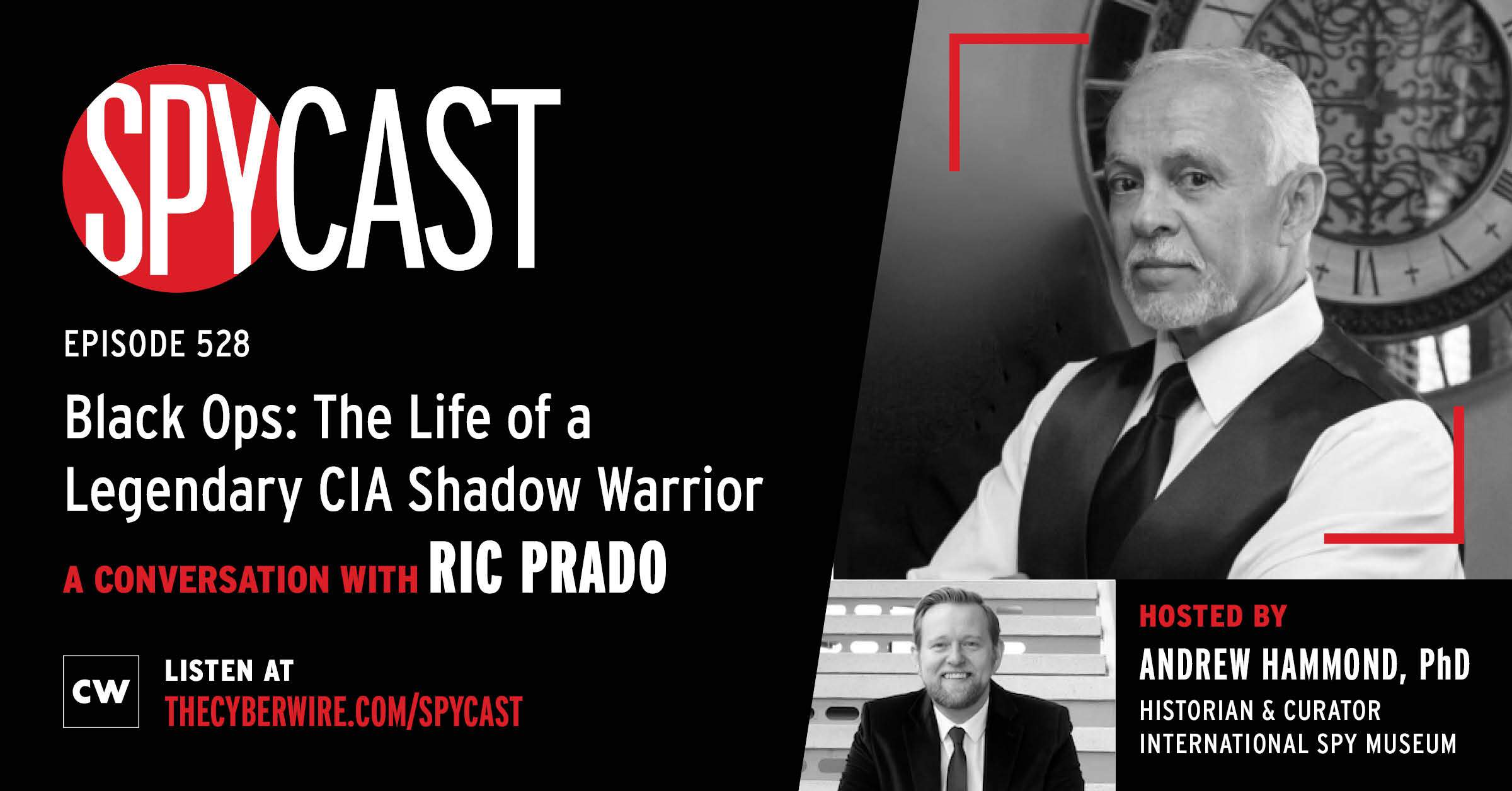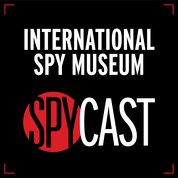
"Black Ops: The Life of a Legendary CIA Shadow Warrior" - with Ric Prado
Summary
Enrique “Ric” Prado (LinkedIn) joins Andrew (Twitter; LinkedIn) to discuss his new memoir “Black Ops.” One of the most renowned CIA officers of his generation tells his story.
Book
You can buy Ric’s book, Black Ops, and support the International Spy Museum’s mission here.
What You’ll Learn
Intelligence
- His time as CIA Counterterrorist Chief of Operations which included 9/11
- His career battling communist insurgents and Islamic terrorists on multiple continents
- His experience living in “Contra” camps during the Nicaraguan Revolution
- His time as Dep. Chief of Station and co-founding member of the Bin Laden Task Force
Reflections
- Conquering your emotions to stay focused in a crisis
- His journey fleeing the Cuban Revolution as a young boy to CIA via USAF Pararescue
And much, much more…
Episode Notes
Ric Prado spent twenty-four-years in the CIA – and what a twenty-four years it was. His first 36 months were in the jungles of Central America as the first CIA officer to live among the “Contras,” including a period with the Miskito Native people; indeed, the photos he took ending up on the desk of CIA Director Bill Casey. So, what was it like at the pointy end of the Reagan Doctrine’s anti-communist spear, or as CIA Counterterrorist Center Chief of Ops during 9/11?
To find out, and to hear more about Ric’s storied career, Andrew sat down with him for this week’s episode. One of the meanings of the noun “legend” is “a story coming down from the past.” Many people who were in the business at the CIA and elsewhere will have heard the stories that come down from the past re Enrique “Ric” Prado, but now we all have a chance to hear Ric set the record straight in his own words.
And…
If Ric’s communist uncle hadn’t alerted the family that his school intended to send him off to the Soviet Union as a promising student for further education…if he hadn’t taken an Oceanography class at Miami Dade College and met someone who led him to USAF Pararescue…if he hadn’t been tipped off that he was to be killed in a Contra camp during the night and extricated himself from the situation…as Bob Dylan said, summing up so much of the human condition, “one more time, for a simple twist of fate.”
Quote of the Week
"The wiring was there and the mentoring from my dad…then the trip to the orphanage. And then definitely when I got into pararescue…being one of our special operations forces, the training is very, very intense…And making it through SERE school, making it through mountain climbing school. There's a certain level of conquering your emotions that you have to do…But I think that the most important thing was that I believed in what I was doing." – Ric Prado
Featured Artifact from SPY’s Collection
Courtesy of the Francis Lara Collection
At the International Spy Museum, we have a reproduction of a 1979 FSLN poster which states, “Nicaragua,” with black Spanish words that broadly translate to, “Homeland/Free or Die” (it is in our collection but not on public display). The Frente Sandinista de Liberación Nacional (FSLN) was, and is, a political party that has evolved through various iterations. Named after César Augusto Sandino, who led the Nicaraguan resistance to the US occupation of the country (1912-1933), it was founded in the early 60’s as a revolutionary movement inspired by Marxist ideology. It's aim was to overthrow the corrupt and authoritarian Somoza family who had ruled the country since 1936. They succeeded in 1979 and would rule under Daniel Ortega until 1990. Nicaragua was a Cold War proxy conflict with the Soviets and the Cubans backing the Sandinistas and the US backing the Contras (from, “contrarrevolución”). Ortega made at least six trips to the Soviet Union, including for the funerals of Brezhnev, Andropov and Chernenko. The ideological civil war that humanity had in the 20th century still lives with us: this poster is but one example; another is that Ortega has been back in power since 2007, albeit in an ideologically watered-down version and without the support of the now defunct Soviet Union. To hear the perspective of the American Ambassador to the country when the Sandinistas came to power click here.
A Historians Reflection
“…the most serious threat to the peace since the Second World War”
This statement was not made with regards to the Russian invasion of Ukraine in 2022, but the Soviet invasion of Afghanistan in 1979.
Presidential Doctrines are fascinating. They are qualitatively different from a policy or strategy pronounced and claimed by political actors. Instead, they are generally “read into” an administration, a strategy, or a speech. For example, the Reagan Doctrine – whose applications one scholar identifies as Nicaragua, Afghanistan, Cambodia, Angola and Mozambique – was applied to Reagan’s 1985 State of the Union, a set of policies, and a “mood” by journalist Charles Krauthammer in Time magazine and the Washington Post. It has since become something of a sport among the political classes, to spot and label the particular sitting president’s “doctrine.” The Trump Doctrine was alternatively described as “No friends, no enemies,” “the withdrawal doctrine,” and “we’re America, b***h.” For President Joe Biden’s “doctrine” see here, here, here and here.
One of the earliest applications was the Monroe Doctrine, from President James Monroe’s 1823 annual address to Congress, which aimed to ward off European colonialism in the Western Hemisphere and define it as an American sphere of influence. Historians who teach the history of US foreign relations then often jump-cut to the 1947 Truman Doctrine, again from a speech to a joint session of Congress, which became a key plank of post-war US policy. He stated, “I believe that it must be the policy of the United States to support free peoples who are resisting attempted subjugation by armed minorities or by outside pressures,” with specific reference to the communist threat to Greece and Turkey. His successor Eisenhower’s Doctrine, was an extension of this to the Middle East, while the Nixon Doctrine qualified it and America’s global posture in light of the Vietnam imbroglio. The quote above is from The Carter Doctrine, which was especially notable and blunt, “Let our position be absolutely clear: An attempt by any outside force to gain control of the Persian Gulf region will be regarded as an assault on the vital interests of the United States of America, and…will be repelled by any means necessary, including military force.”
Carter’s is interesting, because the notion of his “Doctrine” was not merely a “reading into” by journalists or academics, but it was self-consciously discussed by his National Security Advisor Brzezinski (with a historically aware eye on the Truman Doctrine) in correspondence with Carter. It even found its way into Politburo discussions, as revealed in the Chernyaev Diaries “It turns out the Secretary General [Brezhnev] said in some conversation: ‘What doctrine? Can scum have a doctrine.’”
Sometimes “Doctrines” are clear and distinct like Carter’s, while other times they are more amorphous like the Clinton Doctrine and the Obama Doctrine, classic examples of commentators reading the tea leaves of policy rather than a clear “doctrine” former senior officials identify with and espouse. A Bush Doctrine was identified for GW Bush but not so much for GHW Bush. “Doctrines” are not exclusive to the presidency, for example Casper Weinberger and Colin Powell were identified with two doctrines that attempted to set out the parameters for post-Vietnam US military intervention. For a fuller bibliography on “doctrines” go here.
Resources
SpyCast Episodes
- In the CT Center on 9/11, C. Storer
- A Life in the CIA, Hank Crumpton
- Interview with Cofer Black
- CT, Nicholas Rasmussen
- CT Strategy: P. Bergen & C. Costa
- Rethinking CT: J. Blazakis
Books
- The Reagan Doctrine, J. Scott (DUP, 1996)
- The Real Contra War, T. Brown (UOP, 2001)
- Insurgency to Stability, “The Philippines,” Rabasa et al., (RAND, 2011)
- Shining Path’s Politics of War, C. Degregori (UWP, 2012)
- Red Revolution: Philippine Guerillas, G. Jones (Routeledge, 2019)
- The Shining Path, Starn & Serna (Norton, 2019)
- US Relations with Latin America (Five Books)
Articles
- “Shining Path Leader Dead,” BBC (2021)
- “Nicaragua Veers to Dictatorship,” J. Cordoba, WSJ (2021)
Documentaries
- Nicaragua Was Our Home (L. Shapiro, 1985)
- Ballad of the Little Soldier (W. Herzog, 1985)
Primary Sources
- President Carter to Somoza (Brown, 1979)
- Reagan Covert Ops. Nicaragua (NSA, 1981)
- US Aid to Nicaragua (1982)
- Reagan Covert Ops. Nicaragua (Brown, 1983)
- Goldwater to Casey, “I’m Pissed Off” (Brown, 1984)
- Reagan State Of The Union (APP, 1985)
- Reagan Address Nicaragua (ReaganLib, 1986)
- Contras Lost Congress (WaPo, 1986)
- 25 Years of the NPA (Hartford, 1994)
Wildcard Resource
- The Clash, Sandanista (Album, 1980)




